Lasko MyHeat Personal Mini Space Heater, 101
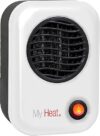
£29.99
Lasko MyHeat Personal Mini Space Heater, 101 Price comparison




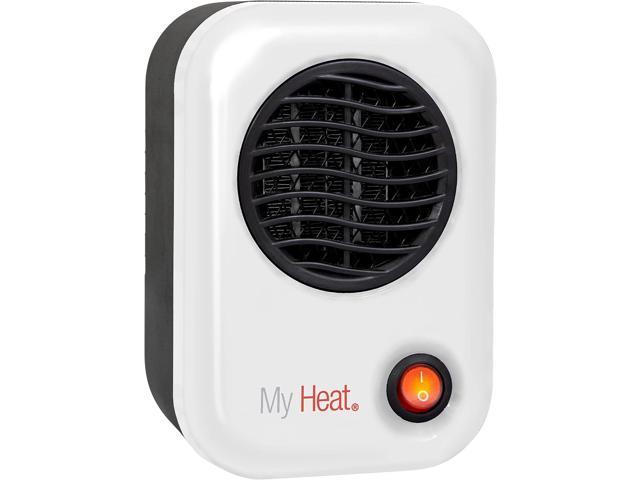
- All prices mentioned above are in United States dollar.
- This product is available at OnBuy.com, Aosom.co.uk, Newegg.
- At onbuy.com you can purchase (Green) 220V Electric Heater Mini Portable Plug-in Personal Space Warmer Desktop Office Handhold Heater for only $22.28
- The lowest price of (white) 500W Portable Mini Space Electric Ceramic Heater Personal Heater Fan was obtained on November 10, 2025 00:24.
Lasko MyHeat Personal Mini Space Heater, 101 Price History
Lasko MyHeat Personal Mini Space Heater, 101 Description
Lasko MyHeat Personal Mini Space Heater, 101 – Efficient Heating at Your Fingertips
The Lasko MyHeat Personal Mini Space Heater, model 101, is your perfect companion for warmth in any season. This compact heater is designed to provide efficient heating for personal use in your office, bedroom, or kitchen. With a powerful 200 watts of heat output, it effectively covers an area up to 50 square feet, ensuring you stay cozy wherever you are. If you’re searching for the Lasko MyHeat Personal Mini Space Heater price or reviews, you’ve come to the right place. Let’s dive deeper into its features and benefits.
Key Features of the Lasko MyHeat Personal Mini Space Heater
The Lasko MyHeat Personal Mini Space Heater stands out due to its functional design and safety features. Below are the most notable characteristics:
- Compact Design: With dimensions of 3.8″ D x 4.3″ W x 6.1″ H, this mini heater is easily portable. It can fit perfectly on your desk or bedside table without occupying much space.
- Energy Efficient: This heater consumes only 200 watts, making it an energy-friendly choice for personal heating. It allows you to stay warm without inflating your electricity bill.
- Overheat Protection: Safety is a priority with the Lasko MyHeat heater. It includes an overheat protection feature, ensuring that it automatically shuts down if it gets too hot.
- Cool Touch Exterior: The exterior of the heater is designed to remain cool to the touch, providing peace of mind when using it in tight spaces or around pets and children.
- Simple Operation: The Lasko heater comes with straightforward controls, featuring only one speed for easy operation, allowing users of all ages to use it without confusion.
- Corded Electric Power Source: Powered by a 6-foot electrical cord, this heater provides flexibility in placement without the need for batteries or fuel, making it a convenient option for indoor use.
Comparison of Prices from Various Suppliers
When considering the Lasko MyHeat Personal Mini Space Heater price, it’s essential to compare it across various retailers. This heater is competitively priced, allowing you to find a deal that suits your budget. Across different suppliers, prices may vary slightly due to shipping fees or promotions. Always ensure you are getting the best value by checking our comparison charts, which showcase current prices, shipping options, and availability.
Price Trends: 6-Month Historical Data
Our 6-month price history chart for the Lasko MyHeat heater reveals encouraging trends. The average price has remained stable, suggesting that this heater is a consistent choice among consumers. Occasionally, prices drop during promotional periods, offering the perfect opportunity to snag this energy-efficient heater at a lower rate. Take note of these fluctuations to get the best deal when you’re ready to purchase.
Customer Reviews Insight – What Users Are Saying
Customer feedback plays a crucial role in understanding the performance of the Lasko MyHeat Personal Mini Space Heater. Here is a summary of both positive aspects and drawbacks noted by users:
- Positive Feedback:
- Many users rave about its portability and compact size, making it ideal for personal use in tight spaces.
- Customers appreciate its reliable heating capabilities, especially during chilly months.
- The overheat protection is a frequently highlighted feature, as it gives users extra confidence in safety.
- Noted Drawbacks:
- Some consumers point out that the heater is suitable for small areas only, which may not meet everyone’s heating needs.
- A few users mentioned it lacks adjustable heat settings, which restricts customization for different preferences.
Explore Unboxing and Review Videos
For those considering the Lasko MyHeat heater, there are numerous YouTube unboxing and review videos available. These videos provide a closer look at the product in use, demonstrating its heating capabilities, and giving visual insights into the size and design. Watching these reviews can assist in making an informed decision about whether this mini space heater aligns with your needs.
Final Thoughts – Warmth Awaits
In conclusion, the Lasko MyHeat Personal Mini Space Heater, model 101, stands out for its efficiency, safety features, and compact design. Whether you need a reliable heater for your desk at work or a personal warmer for your bedroom, the Lasko MyHeat is a commendable choice. Don’t forget to compare prices across various suppliers for the best deal.
Ready to experience the comfort of the Lasko MyHeat Personal Mini Space Heater? Compare prices now!
Lasko MyHeat Personal Mini Space Heater, 101 Specification
Specification: Lasko MyHeat Personal Mini Space Heater, 101
|
Lasko MyHeat Personal Mini Space Heater, 101 Reviews (7)
7 reviews for Lasko MyHeat Personal Mini Space Heater, 101
Only logged in customers who have purchased this product may leave a review.

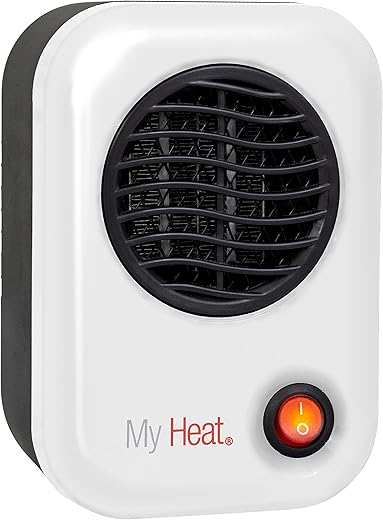

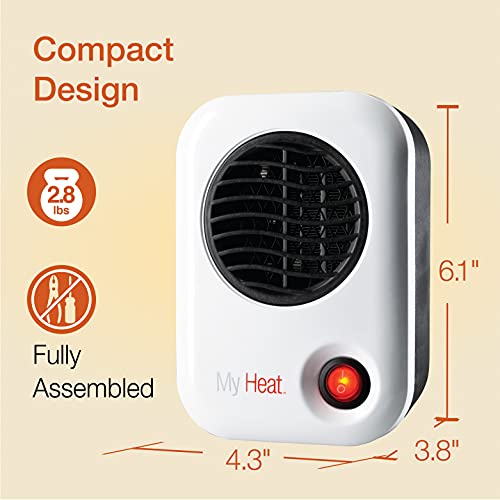

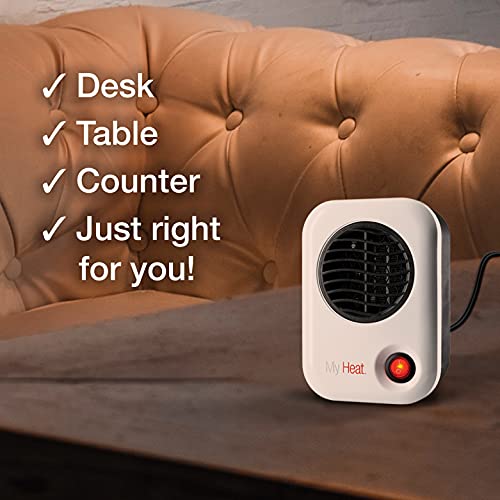
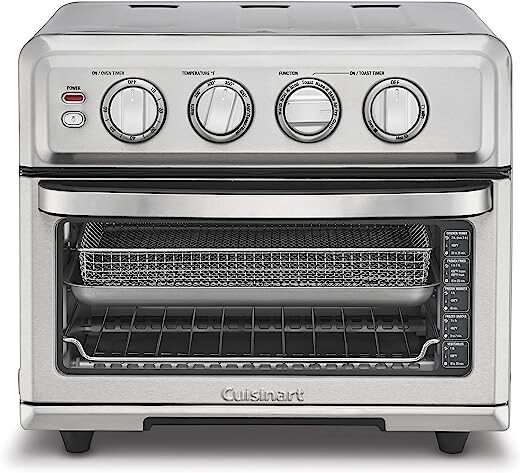
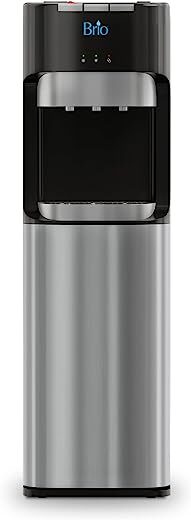


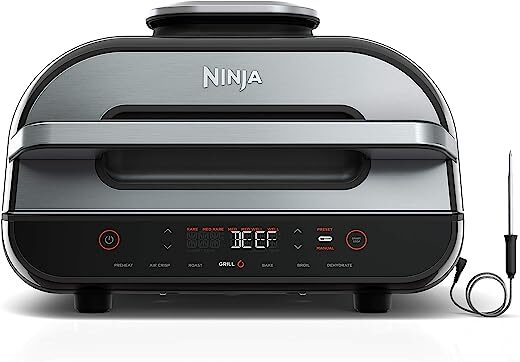
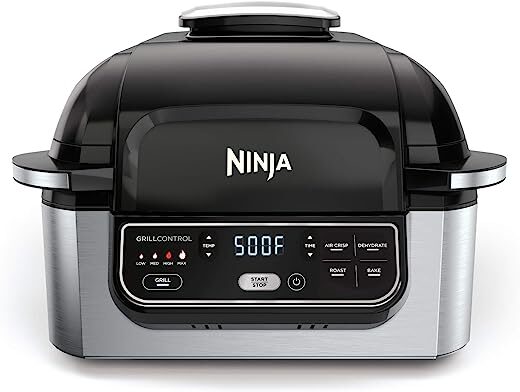
Su Doki –
First, much respect to the reviewer named Vinny P. In 2014, he wrote the longest most comprehensive review of this heater which Amazon still posts. Lots of good info that’s worth reading. Here’s my tidbit.
1. This is the only heater a car battery can safely power. Unlike wired electricity, 20-amp DC power outlets and cigar lighters in vehicles only provide 240 watts maximum. 15-amps is 180 watts without blowing fuses. Tradesmen, Truckers, RVs, boats, and outdoor camps can warm up using batteries and small generators without running the engine. Attach a power cord from the house and the kids can camp in the backyard in November.
2. The surface of this heater is completely cool to touch, not even warm except where it puts out heat. The hot air doesn’t burn when placed close to skin. This is why a tip-over safety feature is not needed. No worries when near babies and toddlers. Knock it over? It’s not hot enough to ignite or burn.
3. It’s UL tested. Underwriter Labs has been testing since early 1900s. No joke. Our project team is renovating 2 buildings built in 1930s that must be upscaled to satisfy current fire codes. We found UL’s 1906 fire testing of all building materials used in construction at that time. It’s so scientifically precise about all the details it’s unbelievable. It’s exactly what we needed to know to apply today’s construction standards. Since 1901, UL keeps records, samples, and now a free online database of every product its ever tested. They are nano-deep into the details about testing for safety. When UL stamps its approval on items, I know it has met all the safety requirements needed. The public can verify and read UL safety reports 24/7/365 on all products. It will tell how, what, when, and where that product is safe and what to do when it isn’t. They don’t test food, drugs and other perishables.
4. Adding this heater to a house, office, or building shouldn’t trip the breakers. Most people assume, if at all, there is 1875 watts of power provided at each outlet. Wrong. It’s 1875 watts per electrical line leaving the breaker box, using a 15-amp AC fuse which is standard. In a room, that line is usually wired to power all the outlets and lights present plus everything else added like clocks, chargers, appliances. The easiest way to determine what’s what is to turn-off the breaker and check what lost power. Electrical wiring is where some contractors shave work and materials to save money. They know nearly all homeowners won’t know, check, or pay for that inspection. Some people can’t check because they live or work in apartments and commercial buildings. When we purchased our house we paid for electrical inspections before closing and after renovation. Before closing was to make the sale contingent on urgent repairs. Afterwards was to make sure work was completed, done right and according to building codes. Renovation replaced the old panel box with a bigger one and added more wiring to the whole house, but especially to the kitchen and bathrooms. Each room and major appliance now has its own line. There’s a separate line for outside too.
5. I’m in an area that has a little snow but not extreme winters. I decided for outdoors 1-2 heaters is enough for temps above 60 degrees. In the 50s add blankets or warmer clothing. Below 40s and on very windy days it’s not enough heat to sit warmly. Definitely have this heater in your emergency kit. It can be placed right against a shirt and underneath blankets to stay warm for survival in frigid weather using any power source found, even solar. It has a cord made to be easily altered.
6. Power Consumption. 200 watts is 65 watts more than my laptop. 3 times less than my 650-watt 4-cup coffee maker that makes 32 ounces. It’s almost 4 times less than the 750-watt low power setting on my hair dryer. Far less than all the kitchen appliances, even knife sharpener.
CONCLUSION. This heater is very well made. Whoever designed it had a lot of thoughts towards filling a little gap in how we live and what we do. Then found a manufacturer who didn’t cut corners. Then Amazon has kept it on the market for at least 10 yrs. I purchased one brand new heater and the 2nd one a week later. I keep both together in a small insulated soft lunch bag that’s sort of square, has a zipper and good handle. It’s the tiny lunch bag made for children or a half sub sandwich and juice box. It takes less than a minute to grab it and go. I’m doing this again to keep a pair at home. This heater is perfect for the office, desk, or dorms. It produces quiet sounds of low-volume white noise other people actually buy. No bells, buzzers, rings, or chirps. The face or largest part of this heater is about half the size of an ipad Mini 6.
My Amazon price was about $17 each. I hope you find this review helpful and worth reading.
Shanna –
Para 200 watts emite bastante calor, es para tenerlo cerca si quieres tener mejores resultados, creo que por el tamaño y consumo de energía tiene una gran relación calidad precio, aunque si estas buscando calentar un espacio muy grande deberías ver otras opciones. En general muy contento con el producto ademas que la marca tiene prestigio.
Misa N. –
Great little heater for a super small space. Wouldn’t heat a room, but I have it set up under my desk so it heats my feet while I’m working. No temp control or safety features so I unplug it after every use
Vinny P. –
Preface
I own several of these Lasko 100 MyHeat Personal Ceramic Heaters, all purchased from Amazon, and I LOVE them! Before purchasing the first two for my particular planned primary use, I had first done a lot of due diligence (i.e., research) to determine whether these small 200 watt heaters would actually adequately address my particular needs. Once I had determined, from some research, that they should indeed do the job, I then ordered two of the heaters (I ordered more later for even other tasks….!), and, sure enough, they turned out to work perfectly for the intended primary use!
Basic Product Description and Bassic Specs
One of the big weaknessess of Amazon Marketplace is that it allows many vendors/sellers list products without listing the basic specifications and a full description. The current Lasko 100 MyHeat heater listing is not overly complete, and while the basic product specs would be completely obvious to someone with an engineering background, such as myself, they may not be obvious to certain other prospective buyers. Here are the basics about the heater that I have been able to determine:
— This is a 200 watt electric heater. It draws about 200 watts at 120 VAC. Current draw is about 1.7 to 1.8 amperes (aka amps) at 120 VAC.
— It is equipped with a 5 or 6 foot AC power cord designed to plug into a standard US 2-prong 120 VAC power outlet.
— The heater incorporates a ceramic heating element and a very small internal electric fan to circulate the warm air.
— The heater produces about 200 watts of heat when turned on and operating. This is equivalent to about 682 BTUs (BTUs, International Table, aka BTUIT) per hour.
— The heater is not equipped with a tip-over shut off safety device, but the manufacturer’s listing states that it is equipped with an over-temperature safety shut-off device.
— The heater is equipped only with with an on/off AC power switch. It is NOT equipped with an internal thermostat, as are some of the larger 1.5 kW heaters. (The heater can easily be turned on and off as needed to regulate temperature by use of an appropriate external thermostatic switch.)
— No, the heater is not “wireless”! (see note below)
— No, the heater cannot be powered by plugging it into a USB port, nor by plugging it into an Ethernet port! (see note below)
— No, the heater cannot be powered by “batteries”, such as AAA, AA, C, or D cell batteries! (see note below)
[BTW, I must confess that the kind of people who ask the questions that were addressed in the three previous items really worry me; I wonder about their IQ, and their ability to think clearly, and about their understanding of the basic laws of physics and electricity!]
A Cautionary Note About the Whiny Reviews re “Not Enough Heat”
I will tell you about my primary use for these heaters in a moment, but first, in light of the abundance of reviews here at Amazon that I have read for this product wherein dissatisfied reviewers have complained that the heater did not, in effect, deliver sufficient heat, I do want to remind all readers of this review that these heaters are plainly and explicitly and clearly stated by the manufacturer to put out about 200 watts of heat; in terms of BTUs per hour, that would be about 682 BTUs per hour (BTUIT/h). So, if your particular heating need requires only 200 watts (682 BTUIT/h) of heat at most, then you should be eminently satisfied with this reliable little heater.
On the other hand, if you order this little 200 watt heater from Amazon when you really needed the amount of heat that, in reality, could only be delivered by a 1.5 KW heater (that is, somewhat over 5,000 BTUs per hour), then yes, you are gonna be dissatisfied, and you will likely end up being one of the many cranky reviewers who post inane negative one-star reviews stating that these little heaters did not deliver sufficient heat! Got it? ????
The Main Body of My Review
Okay, now back to my review, where I recall that I had earlier promised to tell you about my primary use for these heaters, and how well they are working in that application (BTW, I also use others to handle cold spots around our large old drafty house):
I live on a forested mountainside in the Appalachian mountains. The climate gets pretty cold here in cold weather season (to get an idea of average winter temperatures here, you can check out climate tables for Waynesboro, PA or Chambersburg, PA…). I have an insulated and heated 14′ x 12′ Amish barn structure up in my backyard that serves as my workshop and laboratory. The Amish barn stands about 10 feet tall, and it contains essentially one floor of workspace plus a very spacious attic/loft for storage. The building is insulated, but not super well.
And, since air infiltration is usually the biggest source of heat loss in most buildings, I will note here that this building does tend to have reasonably low air infiiltration, just sufficient for adequate ventilation (adequate ventilaion with these Amish barn structures is REALLY important, since, without decent ventilation, the interior space would — due to the massive amount of VOCs off-gassing from large amount of pressed fiberboard and plywood-type materials used in the building construction, plus, in the case of my workshop, additional VOCs off-gassing from wall and ceiling insulation foam, and from carpeting — tend to contain lots of VOCs and related toxic gaseous compounds.
So, the workshop/lab Amish barn structure is insulated, and it measures 14′ x 12′ x about 10′ tall. Due to the equipment (much of it sophisticated electronic test equipment) that I keep, and use, in the building, and also due to the fact that I use the workshop/lab year-round, I want to keep it at an interior temperature of at least 63 degress F during cold weather season, although I do not mind very rare dips of interior temperature to about 55 degrees F on the very coldest winter days/nights (i.e., a string of minus-5 degree F days and nights).
I designed the building to be heated solely by electric heat. However, there is not much AC power available in the building for heating purposes, and for the following reasons:
1) There is only a 15 amp AC line (120 VAC; USA standard) feeding the building.
2) Much of that power is needed for those times when I wish to run the drill press or the circular saw: obviously, if there were also a 1.5 kW portable electric space heater running in the building at the same time, I would blow a circuit breaker every time that I turned on the drill press, the circular saw, or any piece of electronic equipment drawing over about 200 watts!
So, for heating this building during the cold weather season, I simply cannot afford, for many practical reasons, to employ a standard 1.5 kW electric heater with a built-in thermostatic control, whether on the high power (1.5 kW) setting or even on the half-power (about 800 watts) setting; such a large heater simply draws too much AC power while it is turned on. Rather, I realized that I needed small heaters, either one or two heaters in the 200 watt power range.
So, here is the heating setup that I use to keep the workshop/lab buiding at the right temperature during cold-weather season:
First, a certain amount of incidental heat, about 160 watts worth, is emitted non-stop, 24 hours per day, by several CFL lamps that are left turned on at all times, and by a few pieces of essential electronic equipment that operate 24 hours per day (this electronic equipment is used to monitor and log various conditions and parameters of a nearby space-time rift, located about 40 feet from the building; based upon popular request, some more notes on this rift in the space-time fabric may be found in a footnote at the end of this review). So, the lamps and the electronic gear emit about 160 watts of heat as a baseline.
For the remainder of the heating needs for the building , I use a wall-mounted thermostatic switch (a Suncourt DS100 DuctStat Plug-In Thermostat, purchased here at Amazon), with the thermostat set to 63 degrees F, to control either one or two of these Lasko 100 heaters (they are plugged into the thermostatically-switched AC outlet on the Suncourt device), as follows:
If the lowest temperatures for the next two weeks are not predicted to fall much below 25 degrees F, then I leave only one of the Lasko heaters plugged into the thermostat. (The other one is left unplugged and turned off.)
On the other hand, if the lowest temperatures for the next two weeks are predicted to fall significantly below 25 degrees F, then I leave both of the Lasko 200W heaters plugged into the thermostat’s AC power outlet.
Bottom Line
These Lasko heaters, coupled with the thermostatically-controlled switch mounted on an interior wall of the workshop, work perfectly in this application. And, if I need to be work in the building on a cold day, and I therefore want to temporarily raise the interior temperature of the building to the 72 degree F range for my increased comfort, I simply re-adjust the thermostat setting upward by abouty 10 degrees for a few hours, and the heaters kick in to add some extra warmth!
So, for my current heating needs in this building, where the floor, walls and ceiling/roof currently exhibit an average R-value of 13, I need two of these Lasko 200 watt heaters (controlled by the thermostat, as needed) to meet my needs during the coldest portions of the cold-weather season (it is helpful to remember, that in addition to R-value related heat losses, there is some heat loss from the building due to deliberate-but-thankfully-limited crossflow ventilation).
Some Other Possibilities
Now, of course, if I were to crank down the already-very-minimal crossflow ventilation (which would not be at all healthful for any persons and/or cats using the building, due to the aforementioned VOCs, and also due to need for fresh oxygen (O2) exhibted by humans and cats….) to almost zero, and if I were also to invest quite a bit of money into increasing the average R-value of insulation in the floor, walls and ceiling/roof from an R-value of 13 to an average R-value of 40, then I would need only one of these Lasko heaters plugged into the thermostat on even the coldest days and nights.
And, it is also true that if I were to spend even more money (and time and effort) to increase the average R-value of the insulation properties of the floor, walls and ceiling/roof to an R-value of 400, then I would not need any of these heaters at all, and, instead, the incidental stray heat (~160W) from the CFL lamps and the electronic monitoring equipment alone would be more than sufficient to keep the interior of the building toasty warm during even the coldest weather (i.e., a stretch of minus-10 degree F days and nights)!
Of course, on the other hand, if I had never bothered to insulate the building, then the insulation value of the floor, walls and ceiling/roof of the building would be an average R-value of about 1 (R-value=1), instead of the current R-value of 13, and then I would need from 12 to 15 times as much electric heat to heat the building in the cold weather season!
FOOTNOTE #1: Information About the Time-Space Rift, in Response to Questions
This footnote about the time-space rift in my mountainside backyard has been added due to popular demand, because a number of inquirers wished to learn more about the time-space rift, and also wanted to know why and how it is being monitored by equipment in my workshop/lab building located near it.
Briefly, this particular rift in the space-time fabric seems to have existed for at least many thousandes of years, and it’s location does not seem to move at all. The main reason that I am paid by various not-to-be-named private and government agencies to use the earlier-mentioned gear to monitor the nearby space-time rift is because periodically, things come through the rift into our world from other worlds, and from other times. You really do not want to know any more than that about these things that come through, and, in any case, I am not allowed to say any more; you may simply consider them to be flotsam and jetsam from across time, space and various dimensional worlds.
And, likewise, sometimes various things from our world seem to home in on this rift and then enter it at high speed, after which they seem to disappear permanently from our world.
The earlier-mentioned monitoring gear in my workshop/lab is used to monitor and log a number of basic parameters and conditions at the space-time rift boundary, and also to track things (both animate and inanimate) that enter or leave the rift.
[END OF FOOTNOTE #1]
Noe Gonzalez –
Nearly silent, puts out enough heat for me under my desk to take the chill off.
Misa N. –
This is so good, I always have cold feet and this heat is the solution, it’s small quiet, and easy to use. I like it!!!
Raoul Duke –
Me funciona perfecto. Calentarme las manos en mi escritorio y un poco el área. No hace mucho ruido y no gasta mucha corriente.